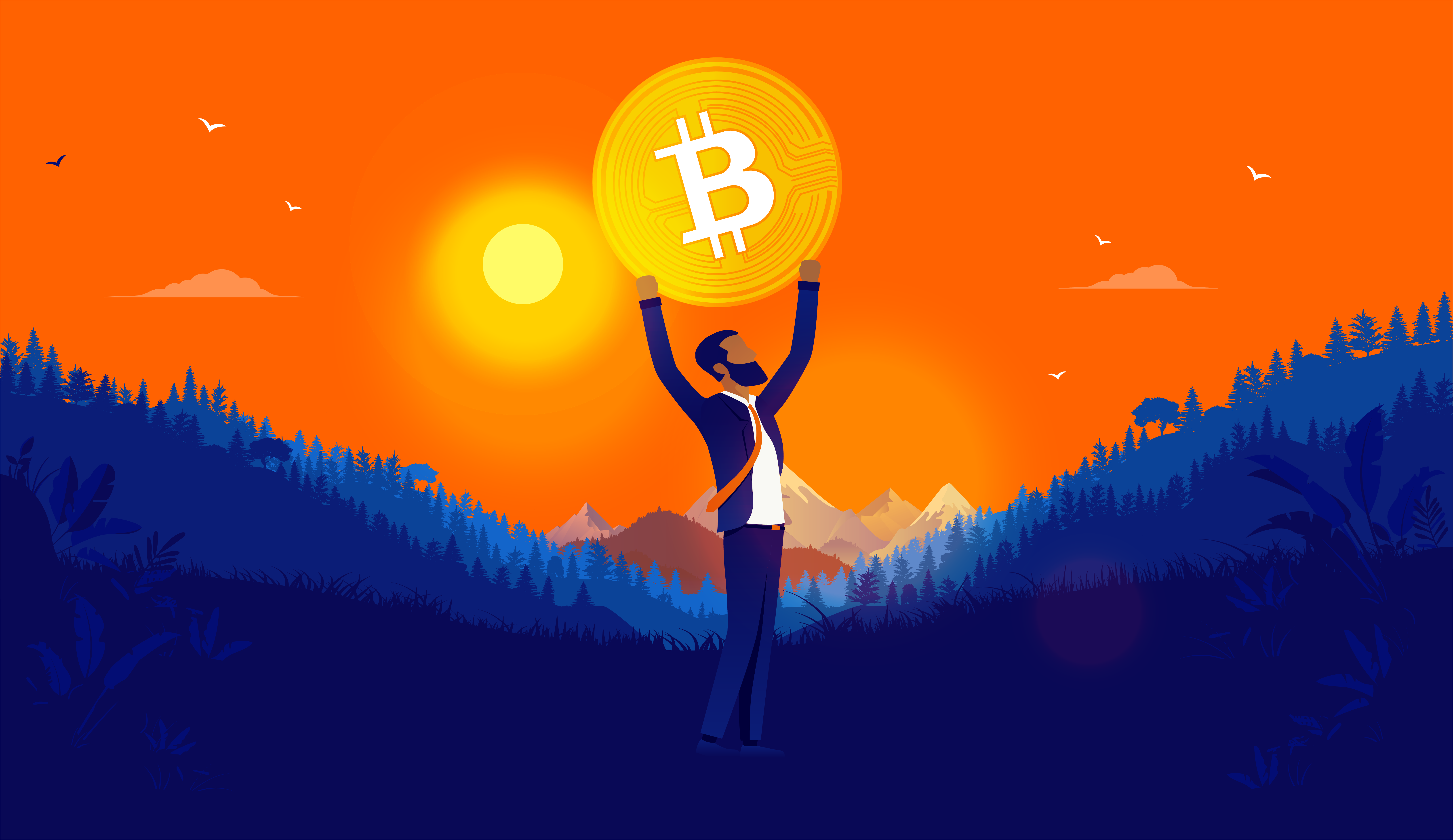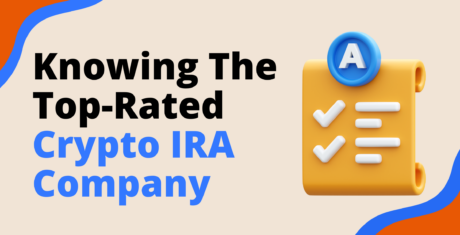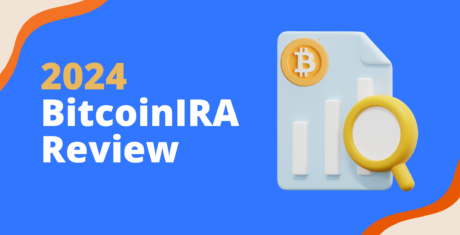A Need for New Currency
Bitcoin was “discovered” in 2008 in the middle of one of the worst financial crises in recent memory. Largely due to irresponsible practices within the United States housing market, this economic downturn shook not only the United States, but rippled throughout the world economy and is often considered a major factor in the subsequent European debt crisis. In a convoluted chain of risky lending, loans based on the high default rate of subprime mortgages (essentially high-risk loans) were bundled and sold off to other financial institutions. With the inevitable collapse of this house-of-cards lending schema, several large financial institutions found their assets devalued, and investment bank Lehman Brothers Holdings, a significant perpetrator of subprime mortgage lending and holder of many of these debts, filed for Chapter 11 Bankruptcy in September of 2008. Though US federal bailouts prevented the further collapse of large financial institutions, preventing an implosion of the global economy, the stock markets took a steep dive, straining the assets and investments of many organizations and individuals.
This crisis was unique in that it was based on trust. The individuals receiving the loans placed a certain trust in the institutions granting them, and trusted their bankers and investment managers to act in their best interest. The message many received from this financial crisis was loud and clear: you don’t control your money, and the people who do don’t care about you. The stereotype of the backstabbing, slick Wall Street investor had been gaining momentum since the 1980s, and the collapse of the mortgage market in 2008 was seen as the natural conclusion of those pump and dump, short-sighted trading tactics.
Trouble with Traditional Money
It was this message that the Bitcoin whitepaper was a response to. In only nine pages, author Satoshi Nakamoto outlined the mathematical and computational basis for Bitcoin, a “peer-to-peer electronic cash system.” (Nakamoto). With commerce ever shifting towards the digital realm, and more power placed in the hands of the electronic payment processors and clearinghouses that enabled companies like Visa to hold such authority, many people were growing uncomfortable with the amount of third-party organizations required to conduct business day to day. The simplicity, and clear ownership, of cash was ideal, and the ability to privately and anonymously transact ‘off the books’ was a huge bonus. However, fiat currencies like the US Dollar, Euro, or Bolivar come with their drawbacks and challenges that a growing movement of individuals found could be overlooked no longer.
The centralized authorities that issue these currencies had ultimate control over the supply, and therefore distribution, of the currencies. This essentially granted the ability to rapidly, and without cause or warning, bring about significant inflation, devaluing the currency held by individuals in the process. Looking at the Bolivar, for example: Venezuela is known for its economic instability, with many citizens making a living off of acting as black-market currency exchanges, and even those who wish to not circumvent the law have to go through shady intermediaries to conduct large transactions (such as buying a home).
This left a void. Physical currencies offered a high degree of control of ownership (if not value), and because of their physical nature were able to be used privately and anonymously. Digital means of payment allowed for international transactions, instant payments, and convenient ways to transfer value from one person to another, but all of these services came at a high price. Fees on international transactions, currency conversions, and even monetary transfers often price these services out of being available to low-income individuals or citizens of developing nations. Companies like Western Union, MasterCard, MoneyGram, and Visa are able to charge such outrageous amounts because individuals have no other choice than to use their networks and their services.
The Birth of Bitcoin
Enter Nakamoto. A major problem with previous attempts at purely digital currency is what’s known as the ‘double-spend problem.’ Essentially, there was no way to create digital scarcity, an innate quality that imparts rarity to an asset and contributes to its perceived value. Digital objects, such as documents, emails, images, and any other file type imaginable, are easily duplicated. With cash, when a customer hands a merchant a bill, the customer no longer has that bill. This transaction cannot be reversed. With a credit card, a customer can call their credit provider and enact a chargeback, restoring the value to the cardholder and taking it out of the hands of the recipient.
In the words of Satoshi, “With the possibility of reversal, the need for trust spreads.” (Bitcoin Whitepaper). In establishing Bitcoin, Nakamoto (whomever he, she, or they are) crafted the elegant computer protocol known as blockchain. The blockchain, as the whitepaper explains, is, “…a solution to the double-spending problem using a peer-to-peer distributed timestamp server to generate computational proof of the chronological order of transactions.” (Bitcoin Whitepaper) Using a cryptographically sound method of encryption enables this ledger of chronological order of transactions to be publicly visible and verifiable without providing the private, protected information behind the transactions to anyone beyond the individuals involved. The name comes from the transactions that are verified in ‘blocks’ that are publicly viewable, and accepted in consensus. Once the majority of users accept a block of transactions as valid, approximately every ten minutes, this block is considered confirmed, meaning those transactions can never be undone, reversed, or altered. They are immutable.
When transacting on the blockchain, say sending one Bitcoin to a recipient, each party knows the “addresses” (or public identification) of all parties involved, the sender and the recipient. But only the individuals know their “private keys,” the identifier needed to access the accounts. At any given point, participants in the Bitcoin network can see any given wallet, the term used for a store of Bitcoin, and exactly how much Bitcoin is stored in that wallet, but nobody can see the identities of the owners of those wallets. This ledger also contains a record of each and every transaction on the network, providing irrefutable proof of transactions occurring.
Bitcoin has never been more accessible to those looking for a secure and robust method of payment, and has become one of the fastest growing stores of wealth in modern history.
Bitcoin is ‘mined’ much the way gold is, only instead of using pickaxes to remove it from mountains, the coins are generated by using powerful computers (or networks of computers) to solve complex equations, called cryptographic hashes. The first computer to solve a hash that returns the correct value for a block, determined by an algorithm, ‘solves’ the block and is rewarded with Bitcoin. The total number of Bitcoin has been set, and is hard-programmed into the protocol itself. This means that there is a finite supply of Bitcoin, again just like gold. The combination of this ‘mining’ method for acquiring Bitcoin and the publicly verifiable ledger of transactions create the digital scarcity needed for a digital currency to function and flourish.
Money for the Masses
With the growing popularity of Bitcoin, more user-friendly services have been created, allowing for a more seamless entry into the world of cryptocurrency. Anyone with access to a smartphone or computer can create a wallet with organizations such as Coinbase, one of the largest digital asset wallet providers in the world. Where once users had to perform several layers of transactions to turn cash (in hand or in a bank account) into Bitcoin, now using an interface like the wallet provided by Coinbase, anyone can use a bank or credit card to purchase the digital currency at the current exchange rate and begin using it to store, trade, or transact right away.
An entire ecosystem has developed around Bitcoin. Applications that allow users to buy, sell, monitor, and store Bitcoin were just the beginning, with a multitude of other apps, such as browsers, social networks, and philanthropic tools, all growing out of Bitcoin’s underlying protocol—blockchain. The technological advancements in computer science as a result of Bitcoin and blockchain technology are unprecedented and represent a revolution in computing and networking unlike anything the world has seen thus far.
Bitcoin has proven to be an incredibly resistant store of value, with each coin remaining over $15,000 USD for the majority of 2022, and returning to above $25,000 in 2023. With a total market cap of over $450 billion (per nomics.com), Bitcoin remains the king of cryptocurrency and the standard against which all other digital currencies are traded today. The regulation around cryptocurrencies, for tax and trading purposes, is still evolving, though the Securities and Exchange Commission looks on holding Bitcoin as similar to owning a commodity (via SEC.gov). The price fluctuations Bitcoin experiences, with daily value shifts of 2% or more not uncommon, mirror more closely traditional commodities like gold and oil. And, like gold and oil, there is a finite supply of Bitcoin.
Economy 3.0
The Bitcoin protocol has built-in scarcity, a major factor in determining the value of Bitcoin. Over time, the supply of Bitcoin released each time a block is mined is reduced, with the last of the predetermined 21 million Bitcoin estimated to be awarded in the year 2140. By that time, the value of each Bitcoin could surpass all current theories and be well into the tens of thousands of dollars. This scarcity, a product of the work required to mine Bitcoin and the finite supply, puts the digital asset in a strong position to continue to appreciate in value; Bitcoin saw an over 500% increase from the start of 2020 to the top of the bull run in 2021, and has already grown nearly 50% since the start of 2023 (after a standard 1-year bear market drawdown). Though the price is subject to (sometimes major) shifts, responding quickly to the temperament of the market, looking at value graphs of one year or more shows rapid growth and a strong upward trend.
Because of the simplicity of the Bitcoin code, and its resistance to change, Bitcoin as a cryptocurrency and technology serves as an inspiration and the foundation of many of the blockchain-based technologies and applications emerging on the market. The popularity, flexibility, and security Bitcoin possesses all contribute to its value, furthering its adoption by an ever-growing population of investors, traders, users, and applications in a cycle which regularly results in Bitcoin’s price reaching new all-time highs. Though like any investment, there is a certain degree of speculation about when the best time to buy or sell might be, the long-term trend has signaled holding, with those who have owned Bitcoin the longest showing the largest gains. The cryptocurrency movement has gained enough momentum to reach a critical mass of adoption, a point where the inherent value of using digital currencies and building technologies around these protocols becomes inescapable. It’s clear that the Bitcoin revolution is in the beginning stages, not the end.
Trouble with Traditional Money
It was this message that the Bitcoin whitepaper was a response to. In only nine pages, author Satoshi Nakamoto outlined the mathematical and computational basis for Bitcoin, a “peer-to-peer electronic cash system.” (Nakamoto). With commerce ever shifting towards the digital realm, and more power placed in the hands of the electronic payments processors and clearinghouses that enabled companies like Visa to hold such authority, many people were growing uncomfortable with the amount of third-party organizations required to conduct business day to day. The simplicity, and clear ownership, of cash was ideal, and the ability to privately and anonymously transact ‘off the books’ was a huge bonus. However, fiat currencies like the US Dollar, Euro, or Bolivar come with their drawbacks and challenges that a growing movement of individuals found could be overlooked no longer.
The centralized authorities that issues these currencies had ultimate control over the supply, and therefore distribution, of the currencies. This essentially granted the ability to rapidly, and without cause or warning, bring about significant inflation, devaluing the currency held by individuals in the process. Looking at the Bolivar, for example: Venezuela is known for its economic instability, with many citizens making a living off of acting as black market currency exchanges, and even those who wish to not circumvent the law have to go through shady intermediaries to conduct large transactions (such as buying a home).
This left a void. Physical currencies offered a high degree of control of ownership (if not value), and because of their physical nature were able to be used privately and anonymously. Digital means of payment allowed for international transactions, instant payments, and convenient ways to transfer value from one person to another, but all of these services came at a high price. Fees on international transactions, currency conversions, and even monetary transfers often price these services out of being available to low income individuals or citizens of developing nations. Companies like Western Union, MasterCard, Moneygram, and Visa are able to charge such outrageous amounts because individuals have no other choice than to use their networks and their services.
The Birth of Bitcoin
Enter Nakamoto. A major problem with previous attempts at purely digital currency is what’s known as the ‘double spend problem.’ Essentially, there was no way to create digital scarcity, an innate quality that imparts rarity to an asset and contributes to its perceived value. Digital objects, such as documents, emails, images, and any other file type imaginable, are easily duplicated. With cash, when a customer hands a merchant a bill, the customer no longer has that bill. This transaction cannot be reversed. With a credit card, a customer can call their credit provider and enact a chargeback, restoring the value to the cardholder and taking it out of the hands of the recipient.
In the words of Satoshi, “With the possibility of reversal, the need for trust spreads.” (Bitcoin Whitepaper). In establishing Bitcoin, Nakamoto (whomever he, she, or they are) crafted the elegant computer protocol known as blockchain. The blockchain, as the whitepaper explains, is, “…a solution to the double-spending problem using a peer-to-peer distributed timestamp server to generate computational proof of the chronological order of transactions.” (Bitcoin Whitepaper) Using a cryptographically sound method of encryption enables this ledger of chronological order of transactions to be publicly visible and verifiable without providing the private, protected information behind the transactions to anyone beyond the individuals involved. The name comes from the transactions that are verified in ‘blocks’ that are publicly viewable, and accepted in consensus. Once the majority of users accepts a block of transactions as valid, approximately every ten minutes, this block is considered confirmed, meaning those transactions can never be undone, reversed, or altered. They are immutable.
When transacting on the blockchain, say sending one Bitcoin to a recipient, each party knows the “addresses” (or public identification) of all parties involved, the sender and the recipient. But only the individuals know their “private keys,” the identifier needed to access the accounts. At any given point, participants in the Bitcoin network can see any given wallet, the term used for a store of Bitcoin, and exactly how much Bitcoin is stored in that wallet, but nobody can see the identities of the owners of those wallets. This ledger also contains record of each and every transaction on the network, providing irrefutable proof of transactions occurring.
Bitcoin has never been more accessible to those looking for a secure and robust method of payment and has become one of the fastest growing stores of wealth in modern history.
Bitcoin is ‘mined’ much the way gold is, only instead of using pickaxes to remove it from mountains, the coins are generated by using powerful computers (or networks of computers) to solve complex equations, called cryptographic hashes. The first computer to solve a hash that returns the correct value for a block, determined by an algorithm, ‘solves’ the block and is rewarded with Bitcoin. The total number of Bitcoin has been set, and is hard-programmed into the protocol itself. This means that there is a finite supply of Bitcoin, again just like gold. The combination of this ‘mining’ method for acquiring Bitcoin and the publicly verifiable ledger of transactions create the digital scarcity needed for a digital currency to function and flourish.
Money for the Masses
With the growing popularity of Bitcoin, more user-friendly services have been created, allowing for a more seamless entry into the world of cryptocurrency. Anyone with access to a smartphone or computer can create a wallet with organizations such as Coinbase, one of the largest digital asset wallet providers in the world. Where once users had to perform several layers of transaction to turn cash (in hand or in a bank account) into Bitcoin, now using an interface like the wallet provided by Coinbase, anyone can use a bank or credit card to purchase the digital currency at the current exchange rate and begin using it to store, trade, or transact right away.
An entire ecosystem has developed around Bitcoin. Applications that allow users to buy, sell, monitor, and store Bitcoin were just the beginning, with a multitude of other apps, such as browsers, social networks, and philanthropic tools, all growing out of Bitcoin’s underlying protocol- blockchain. The technological advancements in computer science as a result of Bitcoin and blockchain technology are unprecedented and represent a revolution in computing and networking unlike anything the world has seen thus far.
Bitcoin has proven to be an incredibly resistant store of value, with each coin remaining over $2,000 USD for the majority of 2017. With a total market cap of over $55 billion (per Coinmarketcap.com), Bitcoin remains the king of cryptocurrency and the standard against which all other digital currencies are traded today. The regulation around cryptocurrencies, for tax and trading purposes, is still evolving, though the Securities and Exchange Commission looks on holding Bitcoin as similar to owning a commodity (via SEC.gov). The price fluctuations Bitcoin experiences, with daily value shifts of 2% or more not uncommon, mirror more closely traditional commodities like gold and oil. And, like gold and oil, there is a finite supply of Bitcoin.
Economy 3.0
The Bitcoin protocol has built-in scarcity, a major factor in determining the value of Bitcoin. Over time, the supply of Bitcoin released each time a block is mined is reduced, with the last of the predetermined 21 million Bitcoin estimated to be awarded in the year 2140. By that time, the value of each Bitcoin could surpass all current theories and be well into the tens of thousands of dollars. This scarcity, a product of the work required to mine Bitcoin and the finite supply, puts the digital asset in a strong position to continue to appreciate in value, seeing a 140% increase in 2016 alone. Though the price is subject to (sometimes major) shifts, responding quickly to the temperament of the market, looking at value graphs of one year or more shows rapid growth and a strong upward trend.
Because of the simplicity of the Bitcoin code, and its resistance to change, Bitcoin as a cryptocurrency and technology serves as an inspiration and the foundation of many of the blockchain-based technologies and applications emerging on the market. The popularity, flexibility, and security Bitcoin possesses all contribute to its value, furthering its adoption by an ever-growing population of investors, traders, users, and applications in a cycle which regularly results in Bitcoin’s price reaching new all-time highs. Though like any investment, there is a certain degree of speculation about when the best time to buy or sell might be, the long-term trend has signalled holding, with those who have owned Bitcoin the longest showing the largest gains. The cryptocurrency movement has gained enough momentum to reach a critical mass of adoption, a point where the inherent value of using digital currencies and building technologies around these protocols becomes inescapable. It’s clear that the Bitcoin revolution is in the beginning stages, not the end.







 3,500+ 5-Star Reviews
3,500+ 5-Star Reviews